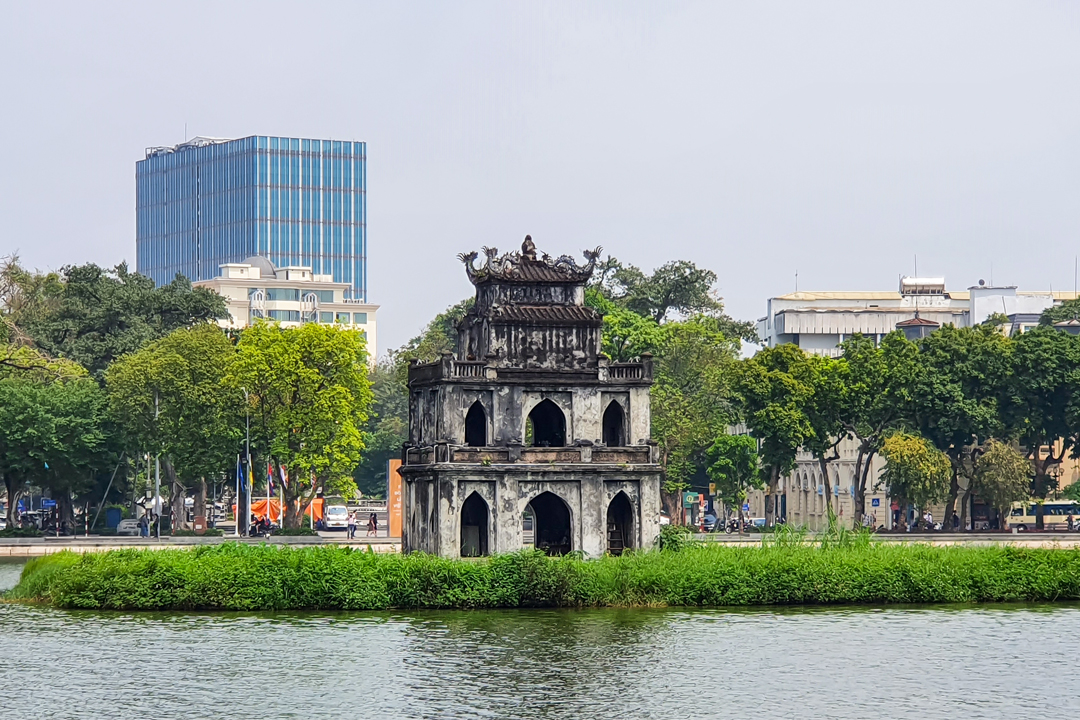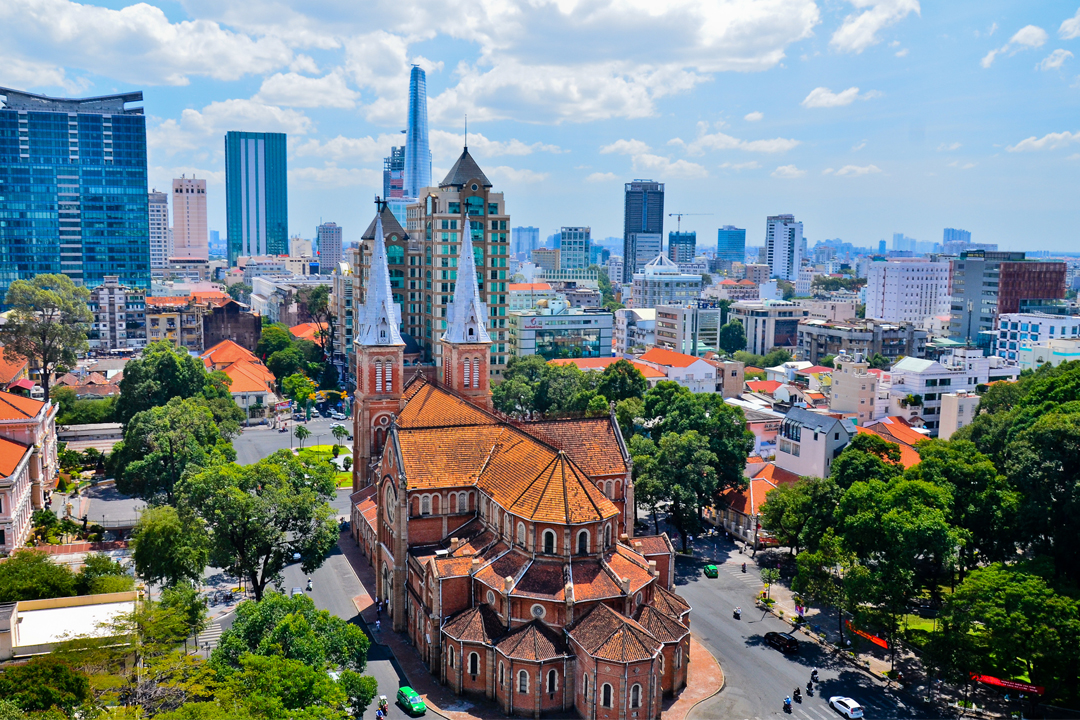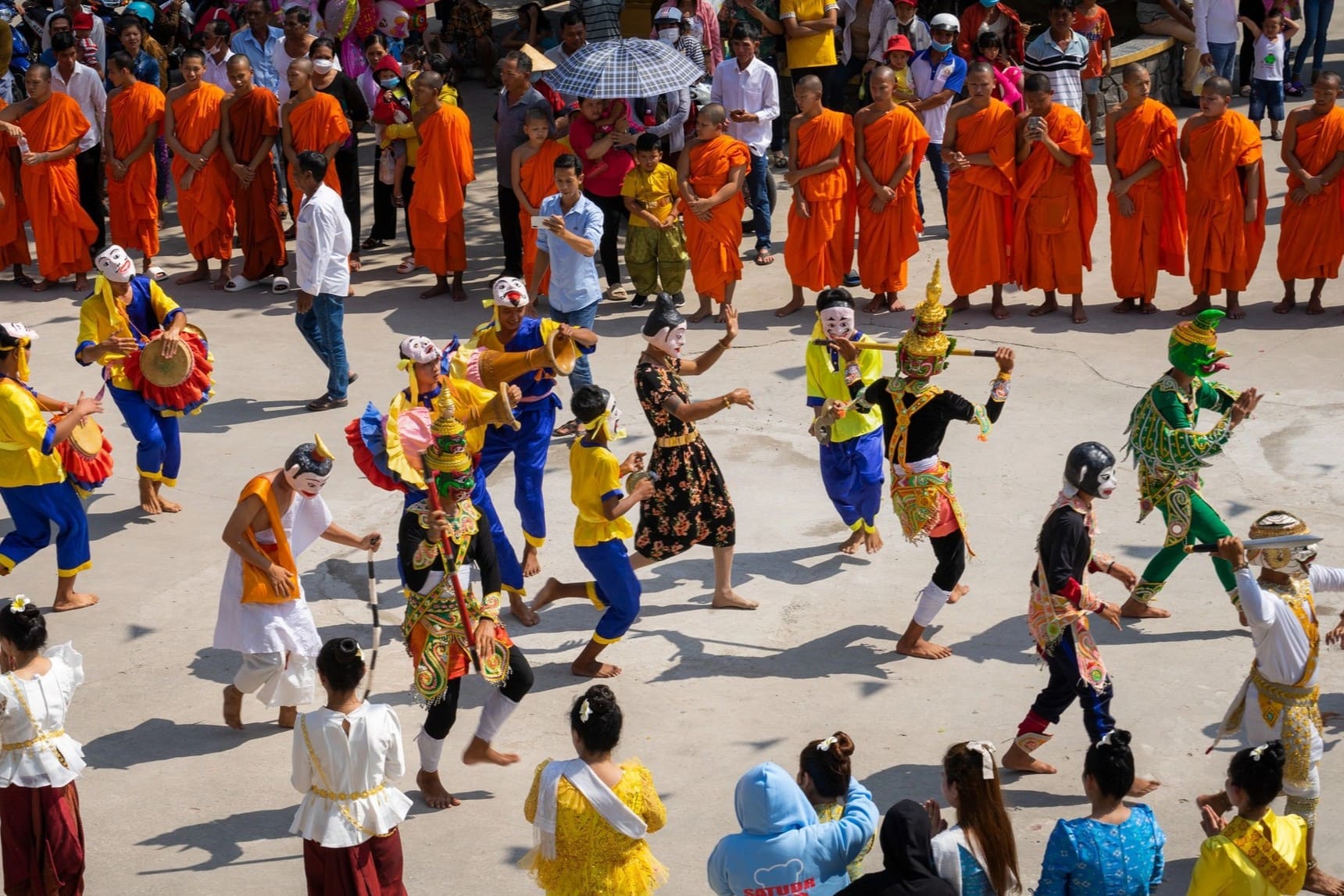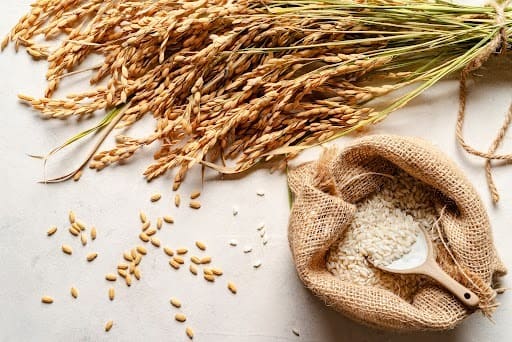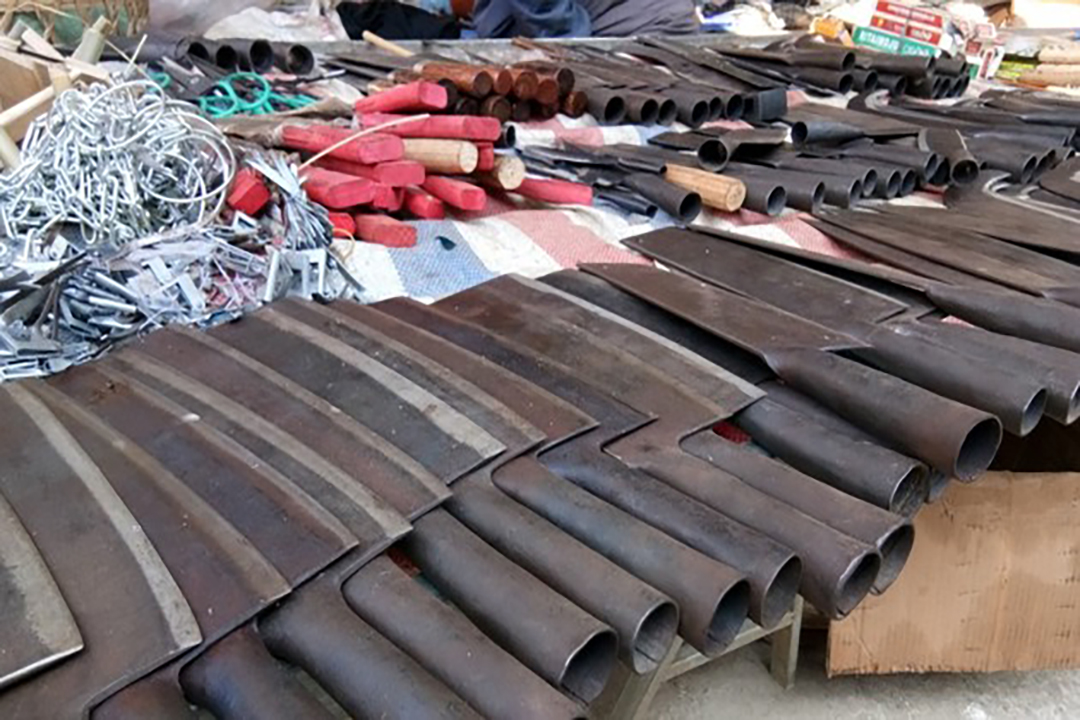Phuc Sen Forging Village: Overview, Things To Do & Travel Guide
For centuries, the rhythmic clang of hammers on heated metal has echoed through Phuc Sen Forging Village in Cao Bang Province. Here, Nung ethnic artisans have mastered the art of blacksmithing, refining their craft through generations. More than a place where tools are made, Phuc Sen preserves a 1000-year-old tradition that shapes both steel and the cultural identity of its community.
Phuc Sen’s handcrafted knives and farm tools stand apart from mass-produced options, forged using time-honored techniques passed down through generations. The unique quenching method, using water sourced from local streams, is said to enhance the durability art form deeply intertwined with ancestral wisdom. Beyond its craftsmanship, the village is a living museum where you can experience the energy of a working forge and engage with artisans.
But what makes Phuc Sen truly special? How has it withstood the test of time in a rapidly modernizing world? Let’s uncover the soul of this blacksmithing haven's history, techniques, and immersive experiences waiting for those who venture here.
Overview of Phuc Sen Forging Village
Phuc Sen Forging Village stands as a symbol of Vietnam’s enduring artisanal heritage. For centuries, the skilled hands of Nung blacksmiths have shaped steel into finely crafted tools, preserving a blacksmithing tradition that has withstood the test of time.
A blacksmithing hub in Northern Vietnam
Nestled within the mountainous landscapes of Cao Bang Province, Phuc Sen Forging Village is a living testament to Vietnam’s rich artisanal traditions. For over a thousand years, the rhythmic sound of hammering on hot metal has echoed through the village, marking it as a center of blacksmithing excellence. While many craft villages in Vietnam specialize in weaving or pottery, Phuc Sen stands out for its blacksmithing tradition. It has earned a strong reputation for its handcrafted forging techniques, producing some of the most durable and finely crafted tools in the country.
Located in Quang Uyen District, the village is home to many families (about 150 families), with more than half actively engaged in the forging trade. This high concentration of skilled artisans makes Phuc Sen one of the largest and most specialized blacksmithing communities in Northern Vietnam. The products forged here ranging from knives and sickles to farm tools are sought after by locals and by craftsmen, farmers, and collectors from across the country.
Phuc Sen is a vital part of Vietnam’s cultural heritage, where craftsmanship connects with ethnic identity, tradition, and rural life. When visiting the village (by self-sufficient tour or through Vietnam tour packages), tourists can witness the intricate forging process firsthand, gaining insight into an industry that has remained largely unchanged despite modern advancements.
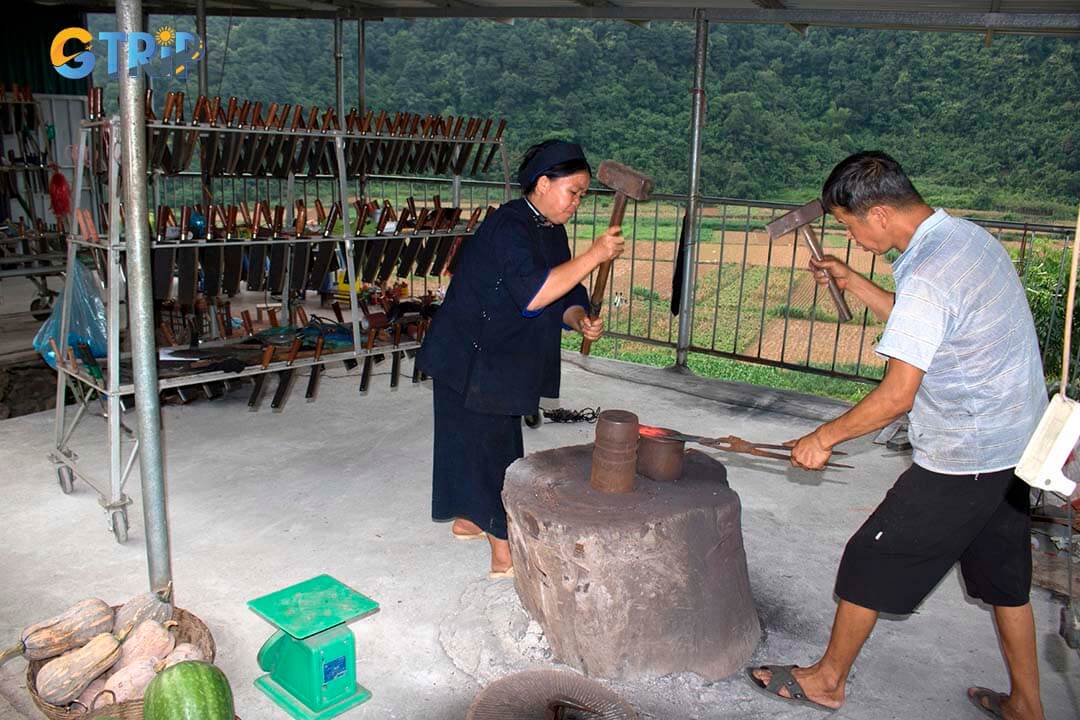
Phuc Sen Forging Village is a renowned blacksmithing hub in Cao Bang, where centuries-old craftsmanship continues to produce high-quality tools
What makes Phuc Sen unique among Vietnamese craft villages?
Vietnam is home to numerous traditional craft villages, specializing in unique handicrafts. However, Phuc Sen stands out in several key ways:
| Feature | Phuc Sen Forging Village | Other Vietnamese craft villages |
|---|---|---|
| Main craft | Blacksmithing & forging | Weaving, pottery, woodworking |
| Age of tradition | Over 1000 years | Varies (few exceed 500 years) |
| Ethnic influence | Nung ethnic minority | Predominantly Kinh or mixed |
| Crafting techniques | Hand-forging, quenching in natural water | Industrial adaptations |
| Product demand | Functional tools (knives, sickles, farm equipment) | Decorative & everyday items |
While Bat Trang and Van Phuc are internationally known, Phuc Sen uniquely preserves its blacksmithing heritage authentically, and uncommercialized. Each handmade knife or tool from Phuc Sen reflects an artisan's meticulous craftsmanship, shaped by fire, hammer, and tradition unmatched by industrial mass production.
The role of the Nung ethnic people in preserving the craft
At the heart of Phuc Sen’s forging heritage is the Nung An ethnic minority, a sub-group of the Nung people who have inhabited the region for centuries. The blacksmithing tradition is an occupation for them is a cultural identity passed down through generations of artisans.
While traditional crafts in many Vietnamese communities are fading due to modernization, the Nung people have fiercely preserved their forging techniques. The reasons for this deep-rooted commitment include:
- Ancestral worship and craftsmanship: Forging is considered an ancestral duty, with skills being passed from father to son as part of familial heritage. Many families have maintained this trade for generations.
- Secret techniques: Certain water-quenching recipes and metal combinations remain family secrets, ensuring that the quality of Phuc Sen’s tools is unmatched.
- Self-sustaining economy: Many villages now rely on tourism, but Phuc Sen’s artisans continue to thrive by meeting domestic and regional demand for high-quality forged tools.
Their dedication keeps Phuc Sen a blacksmithing hub, defying the decline of other craft villages. Phuc Sen is a living museum of blacksmithing, showcasing Nung's resilience and Vietnam’s cultural heritage. Amid modern manufacturing, Phuc Sen remains a beacon of craftsmanship, proving the lasting value of handmade quality and time-honored techniques.
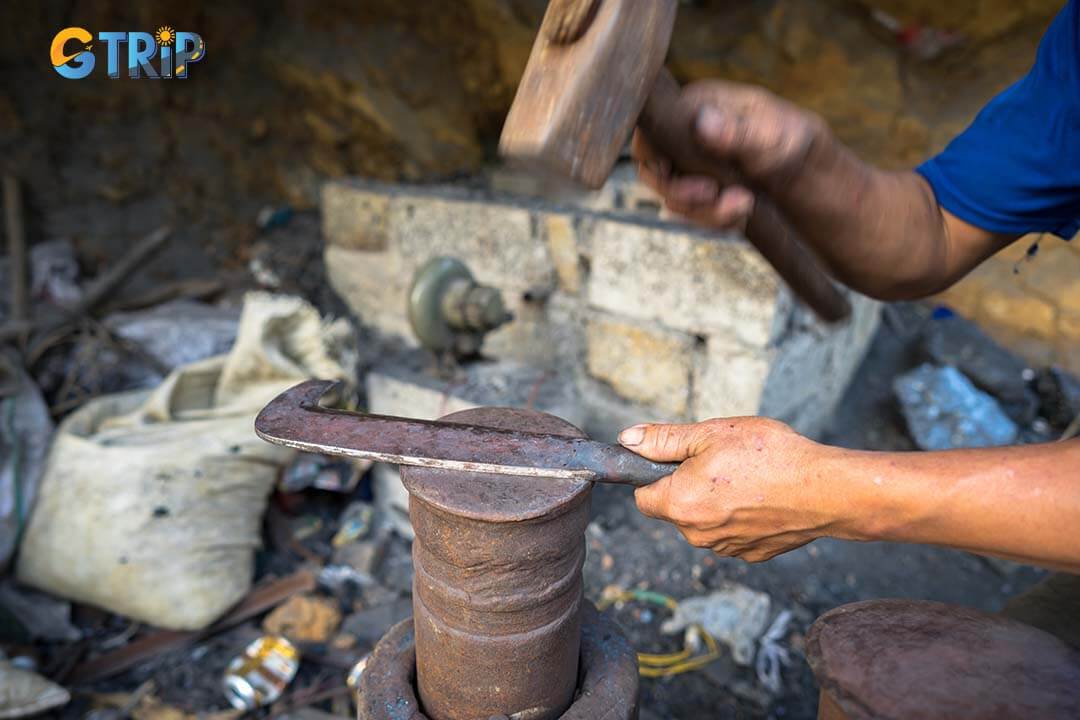
Phuc Sen preserves the Nung An people's blacksmithing heritage, where ancestral skills and secret techniques ensure lasting craftsmanship
Traditional forging techniques and unique methods at Phuc Sen Forging Village
Phuc Sen Forging Village, nestled in Vietnam’s northern highlands, is a hub of traditional blacksmithing preserved by the Nung ethnic community. Renowned for its expertly crafted, durable tools, the village upholds centuries-old techniques, sustaining local livelihoods and cultural heritage.
The full forging process: From raw materials to finished products
At Phuc Sen Forging Village, the blacksmithing process is an intricate craft passed down through generations of the Nung ethnic minority. Many steps in the forging process here are carefully done by hand, ensuring exceptional quality and durability, unlike mass-produced alternatives. Below is a step-by-step explanation of the forging process:
1. Raw material selection
- Blacksmiths primarily use recycled steel from discarded vehicle leaf springs, railway tracks, and industrial scrap metal.
- The metal is carefully inspected for impurities before being prepared for the forging process.
2. Heating and forging
- The selected metal is heated in a charcoal furnace until it reaches a malleable state (usually above 1,200°C).
- Using a combination of hand-held hammers and anvils, artisans shape the metal into rough forms of knives, sickles, or other tools.
- Unlike modern techniques, which rely on automated machines, the forging at Phuc Sen requires precise hand control, passed down through generations.
3. Shaping and beating
- The semi-formed piece is reheated multiple times and beaten repeatedly to refine the shape and remove imperfections.
- This repetitive hammering process enhances the tool’s structural integrity, making it less prone to breakage.
4. Secret water-quenching techniques for durability
- One of the most closely guarded secrets of Phuc Sen’s forging tradition is the water-quenching method, which dramatically improves a blade's hardness and resilience.
- The quenching water is often sourced from local mountain springs and infused with specific minerals that affect the steel’s crystalline structure.
- Some artisans even add herbs or plant extracts, a tradition believed to enhance the blade’s longevity.
5. Tempering and polishing
- After quenching, the blade undergoes tempering to remove internal stresses and prevent brittleness.
- The final shaping, sharpening, and polishing are done using grinding stones, followed by hand-polishing to ensure a razor-sharp edge.
6. Handle attachment and finishing
- Handles are traditionally made from local hardwoods, chosen for their durability and resistance to moisture.
- Some knives are wrapped with woven bamboo or leather for better grip and aesthetics.
- The finished products undergo a final quality check before being sent to markets or custom orders.
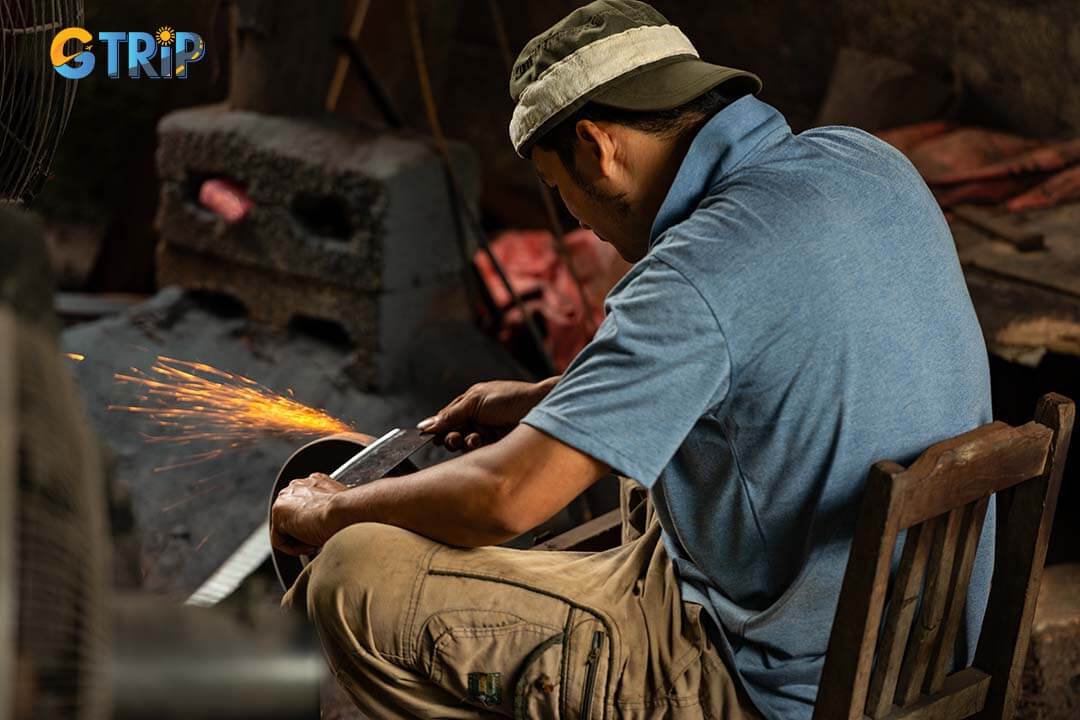
Phuc Sen Forging Village preserves traditional blacksmithing, where generations of Nung artisans craft high-quality tools through meticulous hand-forging techniques
Tools and equipment used by Phuc Sen artisans
Despite its reliance on centuries-old techniques, Phuc Sen’s blacksmithing process utilizes a mix of traditional hand tools and adapted modern materials.
| Tool | Function |
|---|---|
| Anvil | The surface for shaping heated metal |
| Hammer | Used for striking and forming the metal |
| Tongs | For gripping and handling hot steel |
| Charcoal furnace | Heats metal to forging temperatures |
| Grinding stone | Used for sharpening and polishing |
| Quenching tank | Holds water for the hardening process |
One of the most special factors of Phuc Sen forging workshops is the very small appearance of electric machining machines. But today some households have used a stamping machine instead of a hammer strap to increase productivity.
The environmental and sustainable aspects of traditional forging
Phuc Sen Forging Village embodies a balance between traditional craftsmanship and environmental responsibility. The Nung ethnic community has long been recognized for its commitment to preserving both its forging heritage and the surrounding environment.
Artisans here primarily use recycled materials like salvaged steel to create high-quality, durable tools. This approach reduces the need for new metal production, minimizing environmental impact while maintaining the village’s renowned craftsmanship.
Beyond sustainability, Phuc Sen’s forging industry supports the local economy, providing employment opportunities and preserving ancestral skills. The village stands as a testament to how traditional practices can adapt to modern challenges, ensuring cultural heritage and natural resources are safeguarded for future generations.
5 things to do in Phuc Sen Forging Village
Phuc Sen Forging Village is a hidden gem for those seeking an authentic cultural and artisanal experience. As one of Vietnam’s key blacksmithing hubs, it offers a rare glimpse into centuries-old forging traditions, the Nung ethnic culture, and finely crafted tools. If you're passionate about history, craftsmanship, or rural life, Phuc Sen promises a rich and immersive experience. Here are the top activities you shouldn't miss.
1. Visiting a blacksmith’s workshop live
Stepping into an active blacksmith workshop in Phuc Sen is like traveling back in time. These family-run forges, often passed down through generations, still operate using ancient forging techniques refined over centuries. Tourists can watch raw materials forged into sharp knives, sturdy sickles, and durable tools using traditional techniques.
What to expect during a workshop visit?
- Intense heat & sparks: Artisans work in dimly lit workshops, hammering red-hot metal with precision and rhythm. The sight of glowing steel and flying sparks makes for an awe-inspiring experience.
- Step-by-step forging process: Skilled blacksmiths shape the iron, repeatedly heating and hammering it to perfection. Unique water-quenching techniques, exclusive to Phuc Sen, add durability and sharpness to the final products.
- Hands-on experience: Some workshops allow tourists to participate, offering a brief chance to hold the hammer and experience the meticulous craftsmanship firsthand.

Experience the raw energy of Phuc Sen’s blacksmith workshops, where centuries-old techniques forge high-quality tools before your eyes
2. Discovering Nung culture
Beyond blacksmithing, Phuc Sen is home to the Nung ethnic minority, who have preserved their unique customs, traditions, and language for centuries. Exploring the village provides an intimate glimpse into the rich cultural heritage of this group. Below are some cultural experiences you shouldn’t miss:
- Traditional stilt houses: The Nung people live in wooden stilt houses that blend harmoniously with the lush, mountainous landscape. These homes, often adorned with handwoven textiles, offer insight into their architecture and way of life.
- Local textile weaving & embroidery: In addition to forging, some Nung families practice traditional weaving techniques, producing vibrant textiles often worn during festivals and celebrations.
- Experience authentic Nung flavors: You can try dishes like “khau nhuc”, a braised pork belly delicacy with taro and herbs. “Men men” steamed ground corn served with grilled meat and “five-color sticky rice”, naturally dyed with plant extracts for a festive touch.
- Rituals & ancestral worship: Many blacksmithing families maintain shrines dedicated to their ancestors, offering incense and prayers to honor their lineage and seek blessings for their craft.
- Festivals & celebrations: If visiting in early spring or after harvest season, you may witness traditional Nung ceremonies, including folk songs, dance performances, and community feasts.
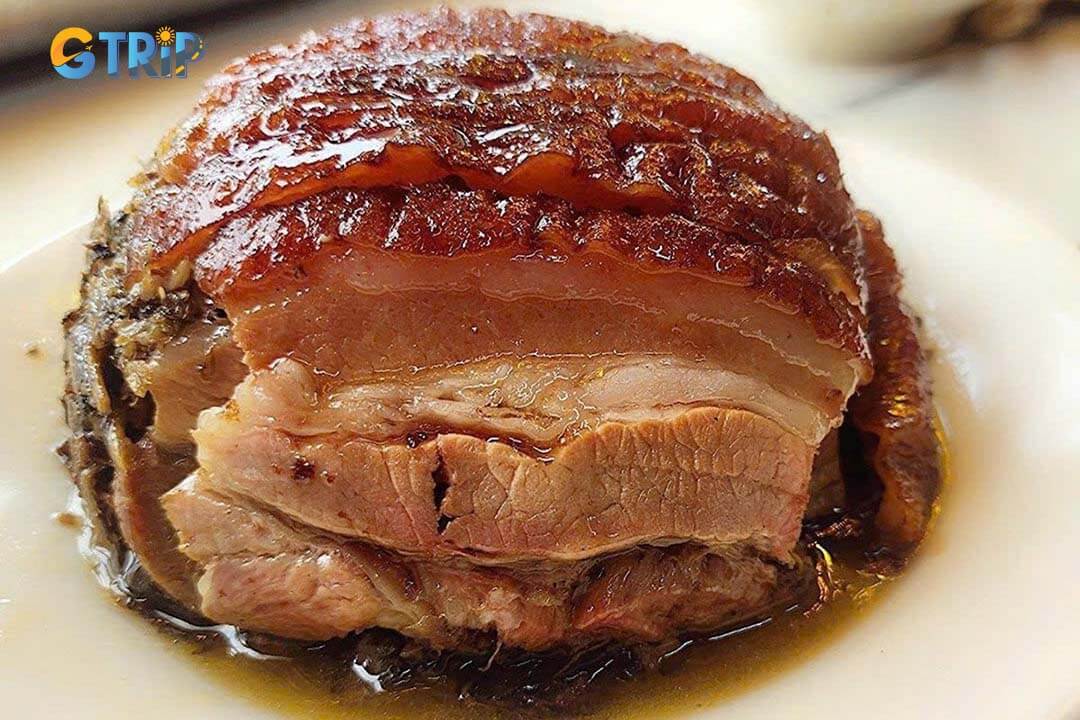
Discover the rich cultural heritage of the Nung ethnic minority in Phuc Sen, from stilt houses and weaving traditions to vibrant festivals and authentic cuisine
3. Learn the history of blacksmithing with locals
Phuc Sen’s forging tradition dates back over 1,000 years with some historians tracing its origins to the 11th century during the Ly Dynasty. The knowledge of metalworking, fire control, and tool-making has been safeguarded within Nung families, ensuring that each generation inherits and refines the craft.
Engaging with local blacksmiths
One of the best ways to understand this history is through conversations with artisans who have spent their entire lives perfecting the trade. Many blacksmiths are more than happy to share stories, folklore, and historical anecdotes about their lineage and techniques.
Key topics to explore with the blacksmiths:
- The evolution of forging techniques - How ancient methods have adapted over time.
- Secrets of the trade - Why Phuc Sen’s knives are highly sought-after across Vietnam.
- Family legacies - Many blacksmiths can trace their craft lineage back multiple generations.
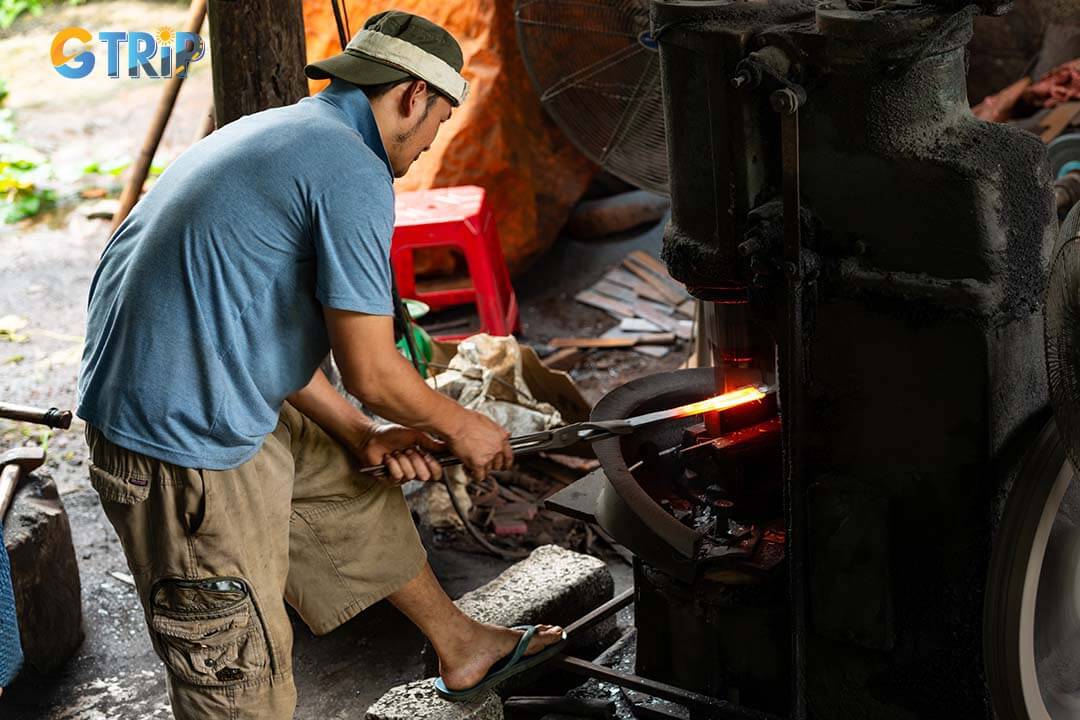
Phuc Sen’s thousand-year-old forging tradition is preserved through generations, with blacksmiths eager to share their craft, history, and trade secrets
4. Shopping for authentic handmade knives and tools
A visit to Phuc Sen wouldn't be complete without bringing home a piece of its renowned craftsmanship. The village's artisans create exceptionally sharp and durable knives and tools, all meticulously hand-forged using traditional techniques.
What makes Phuc Sen knives special?
- Handcrafted durability - Each knife is meticulously shaped, heat-treated, and sharpened, ensuring unparalleled strength and longevity.
- High-quality steel - Local blacksmiths often repurpose steel from old car springs, known for their resilience and toughness.
- Superior sharpness - The special water-quenching technique used in Phuc Sen gives the blades their legendary sharpness.
- Authenticity guarantee - Unlike mass-produced knives, Phuc Sen blades have unique imperfections that reflect the artisan’s craftsmanship.
- The knife handle is made from Cam Chi wood (a small but strong and durable wood) and is covered with copper to fix the knife.
Best-selling products you can buy
- Kitchen knives - Used by chefs across Vietnam for their precision cutting.
- Sickles & farming tools - Essential for agricultural work, known for their durability in tough conditions.
- Machetes & cleavers - Heavy-duty blades perfect for chopping through thick materials.
- Custom engraved knives - Some blacksmiths offer personalized engraving services, making them perfect souvenirs or gifts.
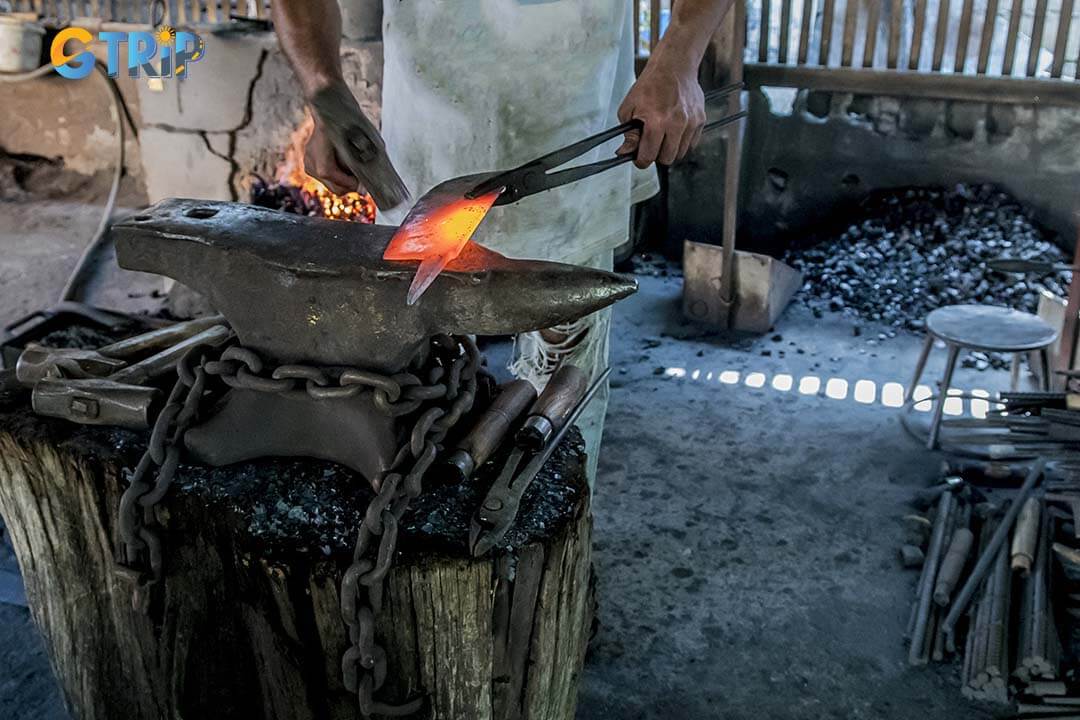
Phuc Sen’s hand-forged knives are prized for their durability, sharpness, and unique craftsmanship, making them a must-have souvenir for visitors
5. Admire Phuc Sen Forging Village from the peak of Pac Rang Mountain
A short trek up Pac Rang Mountain offers a stunning panoramic view of Phuc Sen Blacksmithing Village. From the summit, you can admire the rhythmic smoke rising from forges, symbolizing the village’s rich heritage. The hike takes about 45 minutes and rewards travelers with breathtaking sunrise and sunset views, perfect for photography. In the late afternoon, the cooler temperatures make the climb more enjoyable, and as dusk falls, the village lights twinkle below. This scenic spot provides a unique perspective on Phuc Sen’s traditional craft while offering a peaceful connection with nature, making it a must-visit experience.
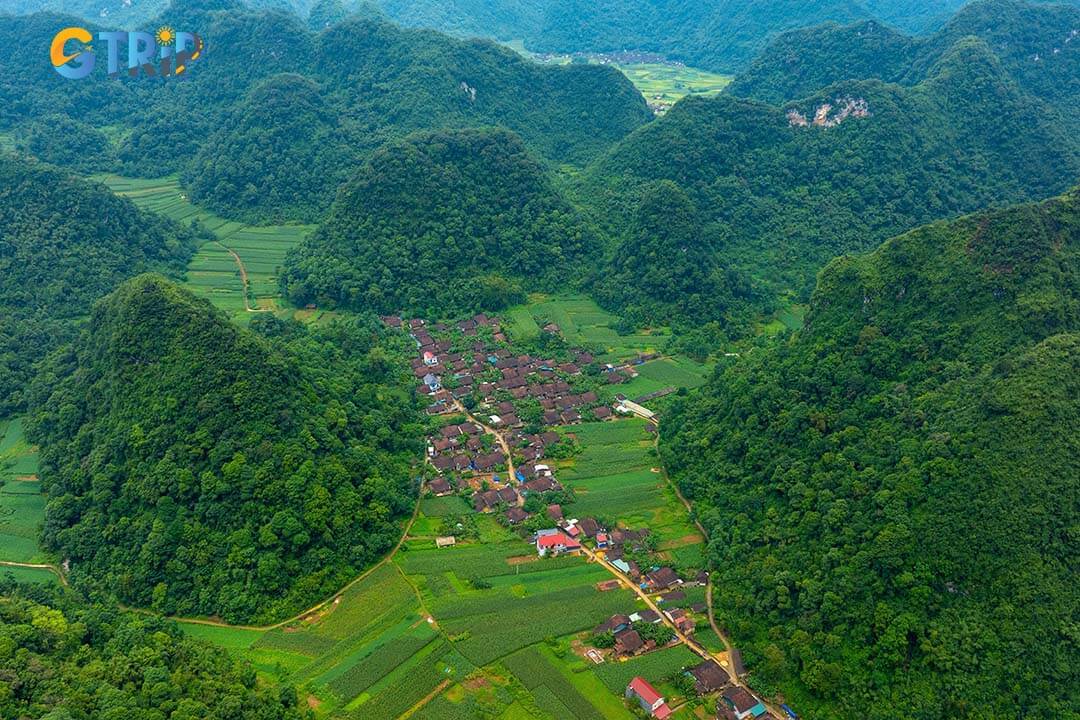
Hike Pac Rang Mountain for stunning views of Phuc Sen, where forge smoke rises against scenic sunrise and sunset backdrops
A visit to Phuc Sen offers an immersive experience of Vietnam’s blacksmithing heritage, history, and traditions. Watching master blacksmiths, engaging with the Nung community, and owning a handcrafted knife all deepen your understanding of Vietnam’s rural artisanship.
When is the best time to visit Phuc Sen Village in Cao Bang?
The optimal time to visit Phuc Sen Village is during the dry season, from October to April when the weather is pleasant and the roads are in good condition. However, the village is open year-round, and each season offers its unique charm.
Spring (February - April):
- Mild climate: Temperatures typically range from 15°C to 25°C, creating a comfortable environment for exploring the village on foot.
- Floral bloom and renewed energy: The surrounding landscape bursts into bloom, enhancing the village's natural beauty and providing excellent photographic opportunities.
- Cultural vibrancy: Spring often coincides with local festivals and rituals, such as ancestral worship ceremonies, where villagers pay homage to their blacksmithing heritage.
- Fewer crowds: While the village sees moderate tourism in spring, it is not as congested as peak periods, allowing for more intimate interactions with local artisans.
Winter (October - January):
- Optimal weather: With temperatures ranging from 18°C to 28°C and low humidity, autumn is particularly pleasant for outdoor activities and detailed exploration of active forges.
- Harvest celebrations: This season is marked by festive activities and harvest-related events, providing a deeper insight into the local culture and lifestyle.
- Vibrant workshop activity: Artisans are typically busy during autumn, making it an excellent time to witness live forging demonstrations and to see the production of traditional tools at their peak.
In summary, for an authentic and comfortable experience at Phuc Sen Village, plan your visit during spring or autumn. These seasons offer favorable weather and fewer crowds and immerse you in the cultural and artisanal essence of this historical craft village.
How to get to Phuc Sen Forging Village?
Phuc Sen Forging Village is an authentic destination for travelers interested in traditional blacksmithing. As it is situated in a remote region, planning your trip is essential to ensure a smooth journey. Phuc Sen Forging Village will usually operate almost all day and start operating early around 6:30 AM - 6:30 PM. Below, we break down the best travel routes and transportation options to help you reach Phuc Sen efficiently.
Getting to Cao Bang from Hanoi - The gateway to Phuc Sen
Before reaching Phuc Sen Forging Village, tourists must first travel to Cao Bang City. This is the main transit hub from which you can continue your journey to the village.
Hanoi is the most common starting point for trips to Cao Bang. The distance between Hanoi and Cao Bang City is approximately 280 km, and there are multiple ways to make this journey:
| Mode of transport | Travel time | Estimated cost (VND) | Details |
|---|---|---|---|
| Bus | 6 - 8 hours | 200,000 - 350,000 | Most budget-friendly, departs from My Dinh or Gia Lam bus stations |
| Limousine | 5.5 - 7 hours | 400,000 - 600,000 | Comfortable, faster, available from multiple companies |
| Private car | 5 - 6 hours | 3,000,000 - 4,500,000 | Most convenient, allows flexibility in stops |
| Motorbike | 8 - 10 hours | Varies | Ideal for adventure travelers, offers scenic views but requires experience |
Best bus companies:
- Hiep Giang, Vinh Dung, and Hanh Quan offer daily buses to Cao Bang from Hanoi.
- Buses depart from My Dinh, Nuoc Ngam, or Gia Lam bus stations.
Recommended limousine services:
- Hiep Giang Limousine and Thien Van Limousine provide door-to-door service with reclining seats.
Flights
There are no direct flights to Cao Bang. The nearest airport is Noi Bai International Airport (Hanoi) which is 64.2 km away, so road travel is the suitable viable option.
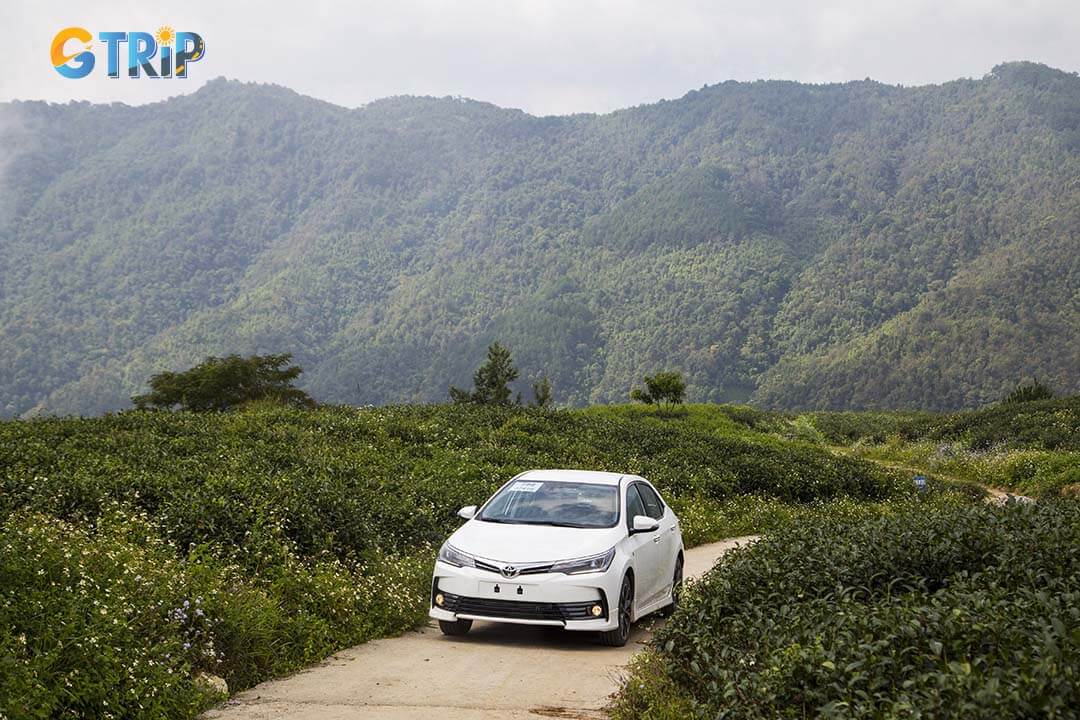
Traveling to Phuc Sen starts in Hanoi, with options like buses, limousines, private cars, or motorbikes for the 280 km journey to Cao Bang City
Reaching Phuc Sen Forging Village from Cao Bang City
Once you arrive in Cao Bang City, Phuc Sen Forging Village is around 4 km from Quang Uyen district. There are several ways to get there:
| Mode of Transport | Travel time | Estimated cost (VND) | Details |
|---|---|---|---|
| Local bus | 45 - 60 min | 30,000 - 100,000 | Budget-friendly, departs from Cao Bang Bus Station |
| Taxi | 30 - 45 min | 200,000 - 400,000 | Comfortable, flexible, direct route |
| Motorbike rental | 50 - 70 min | 150,000 - 250,000/day | Best for independent travelers, allows stopovers |
Local bus:
- Buses to Quang Uyen District leave from Cao Bang Bus Station as Bus 03, Bus 07.
- Ask to be dropped off at Phuc Sen Commune.
Taxi & ride-hailing:
- Taxis such as Mai Linh or Cao Bang Taxi are available.
- You can book major ride-hailing services such as Grab to travel in this area.

Phuc Sen is about 4 km from Quang Uyen, accessible by local bus, taxi, or motorbike rental from Cao Bang City
Important travel tips for visiting Phuc Sen Forging Village
Phuc Sen Forging Village offers a deeply immersive experience of Vietnam’s traditional blacksmithing heritage. Be well-prepared to navigate the rural landscape, respect local customs, and stay safe with these essential travel tips.
Understanding local etiquette and cultural sensitivities
Phuc Sen is home to the Nung An ethnic minority, whose way of life revolves around blacksmithing, ancestral worship, and community values. To show respect and avoid cultural misunderstandings:
Do’s:
- Greet artisans with a smile and a polite nod the Nung rarely shake hands.
- Ask for permission before taking photos, especially inside family-run forging workshops.
- Show interest in their craft many artisans enjoy sharing stories about their blacksmithing heritage.
Don’ts:
- Avoid touching unfinished metal tools without permission, as some may still be hot or sharp.
- Do not point your feet towards the family altar when visiting a Nung home it’s considered disrespectful.
- Refrain from loud conversations or disruptive behavior, especially during the midday rest hours (12 PM - 2 PM).
Staying safe in blacksmith workshops
Many workshops in Phuc Sen welcome tourists for demonstrations, but these are active blacksmithing spaces where safety precautions are necessary:
Safety tips when observing forging work:
- Stand at least 2 meters away from the forge to avoid sparks.
- Avoid loose clothing that can easily catch fire.
- If offered a chance to try hammering hot metal, wear protective gloves and follow the artisan’s guidance.
First aid & medical facilities:
- The closest medical center is in Quang Uyen Town (4 km away).
- For serious emergencies, visitors may need to travel to Cao Bang City General Hospital.
- Carry a basic first-aid kit, including band-aids, antiseptic wipes, and pain relievers or maybe ask the villager for help.

Respect local customs and stay safe by greeting politely, asking before taking photos, avoiding disruptions, and following safety guidelines in workshops
Where to eat & what to try when visiting Phuc Sen Forging Village?
While Phuc Sen is not a culinary hotspot, you can still find authentic local meals at small eateries. Some recommended options include:
Local dishes to try:
- Trung Khanh chestnuts - Trung Khanh chestnut is the only fruit found exclusively in Cao Bang which is equally brown, circular, and contains the tiniest seed, which is the size of a big toe. It can be cooked, roasted or dried.
- Banh cuon Cao Bang - Steamed rice rolls filled with minced pork, served with bone broth.
- Grilled meat skewers - Marinated pork or beef grilled over charcoal.
- Sticky rice - Traditional Nung-style sticky rice, often served with sesame salt.
Where to eat:
- Local home-stay meals - Many families offer home-cooked Nung cuisine upon request.
- Quang Uyen town (4 km away) - Offers more variety, including noodle soups, rice dishes, and local markets selling snacks.
Tip: Carry small denominations of cash, as credit cards are not widely accepted at all.
Supporting local artisans with responsible tourism
To preserve Phuc Sen’s blacksmithing heritage, you should practice responsible tourism:
- Buy authentic handcrafted products instead of mass-produced souvenirs.
- Support homestays and local businesses rather than large tour operators.
- Respect the environment - dispose of trash properly and avoid littering.
Did you know? A handmade Phuc Sen knife provides a high-quality tool that supports artisan families and helps sustain the village’s ancient craft.
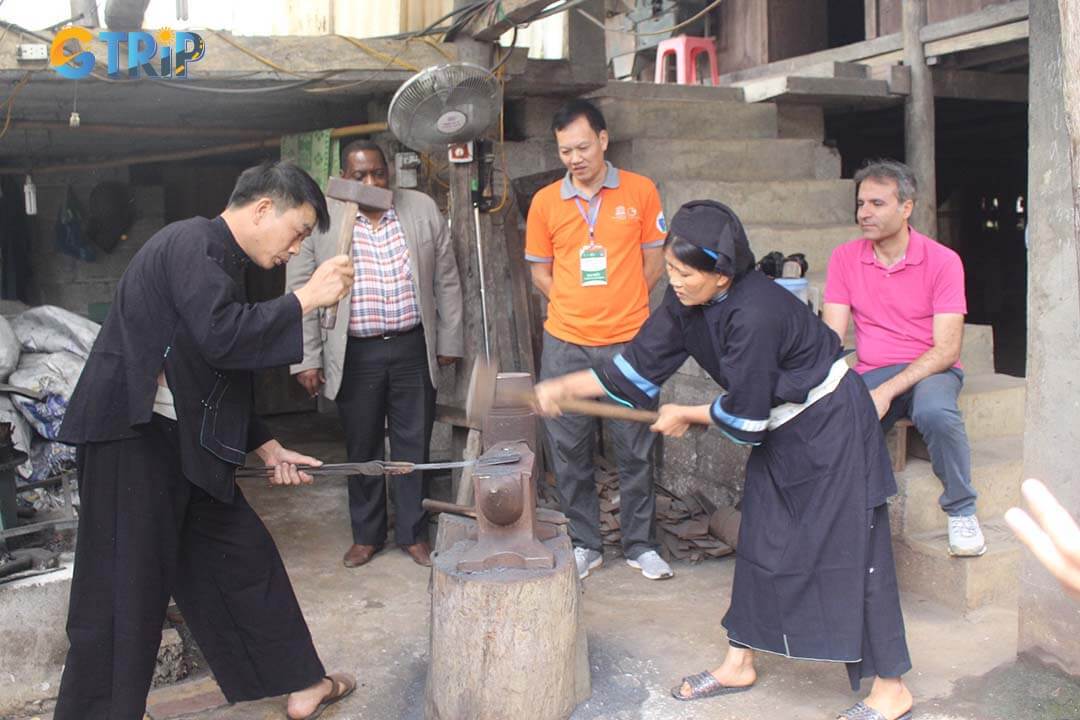
Support Phuc Sen’s artisans by buying authentic knives, staying in local homestays, and respecting the environment
Frequently asked questions about Phuc Sen Forging Village
Here are some frequently asked questions to help you prepare for your visit to Phuc Sen Forging Village. These essential tips cover everything from photography etiquette to communication and interactive experiences, helping you make the most of your visit.
1. Can I take photos and videos in the village?
Yes, photography and videography are allowed, and most blacksmiths are happy to have their work documented. However, it’s always polite to ask for permission before filming or taking close-up photos of artisans at work.
2. Do locals speak English in Phuc Sen?
English is not widely spoken in Phuc Sen, as most villagers speak Nung An and Vietnamese. However, many artisans are used to foreign visitors and can communicate using simple gestures. If you don’t speak Vietnamese, it’s helpful to hire a local guide for a better experience.
3. Is Phuc Sen suitable for children or elderly travelers?
Yes, but with some precautions:
- Children should be closely supervised, as blacksmithing involves sharp tools and fire.
- Elderly you should be aware that the village paths are uneven, so comfortable shoes are recommended.
4. Can I participate in forging my knife or tool?
In fact, to be able to participate in creating your own knife product is not specific but you can ask artists in the village to be allowed if possible. You may be able to participate in basic stages without skills in the process of creating a knife.
Phuc Sen Forging Village preserves centuries-old blacksmithing, crafting high-quality knives and tools. The village offers more than fine metalwork, immersing visitors in Nung An traditions and hands-on forging.
For those seeking authentic craftsmanship, Phuc Sen is more than just a tourist stop—it’s a living heritage site where skill, history, and culture converge. If you're seeking a unique souvenir, exploring traditional forging, or admiring Vietnam’s artisanal heritage, this village offers a rich experience. Plan your journey with GTrip - Vietnam Travel Agency to make the most of your visit.

